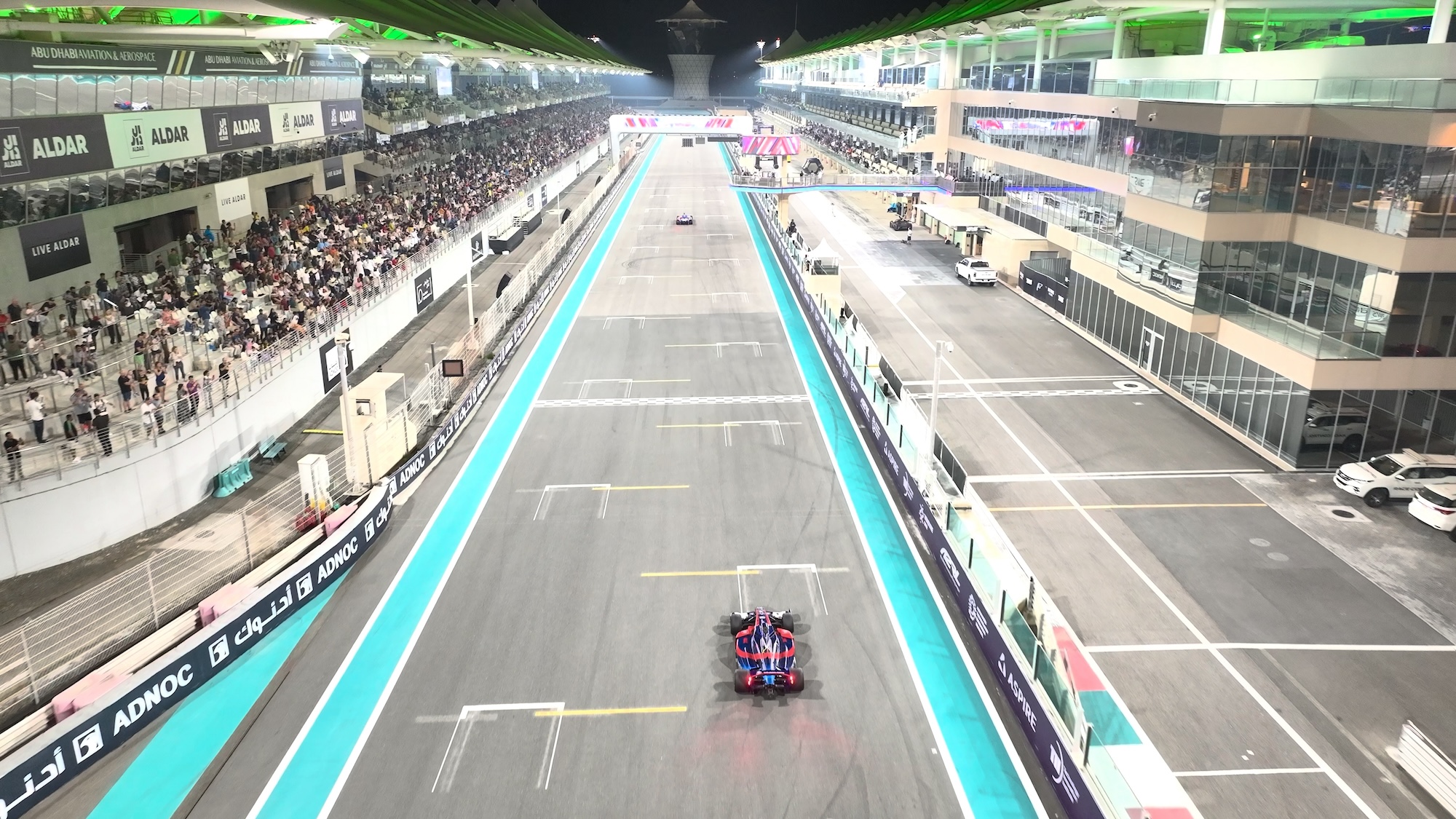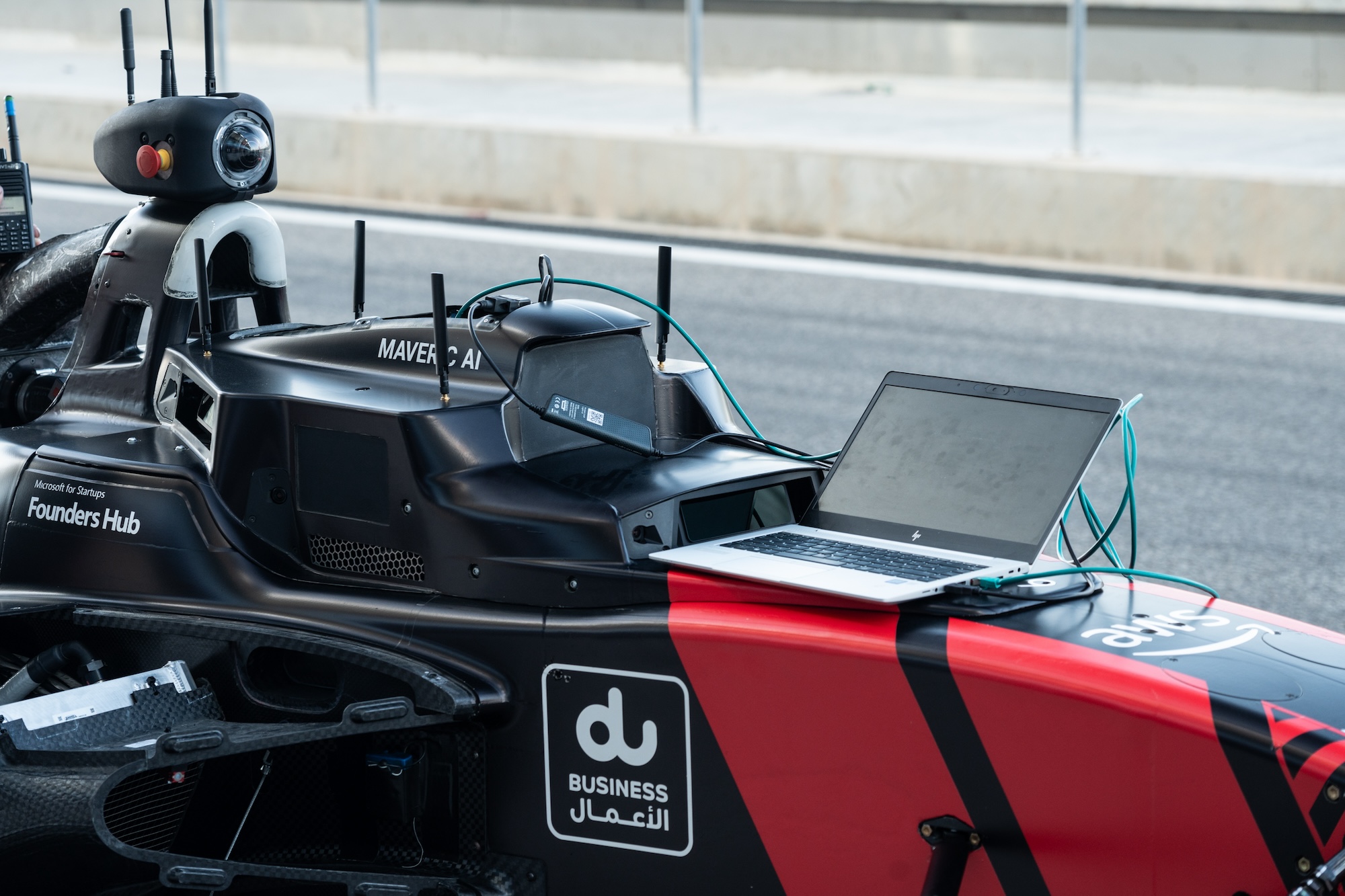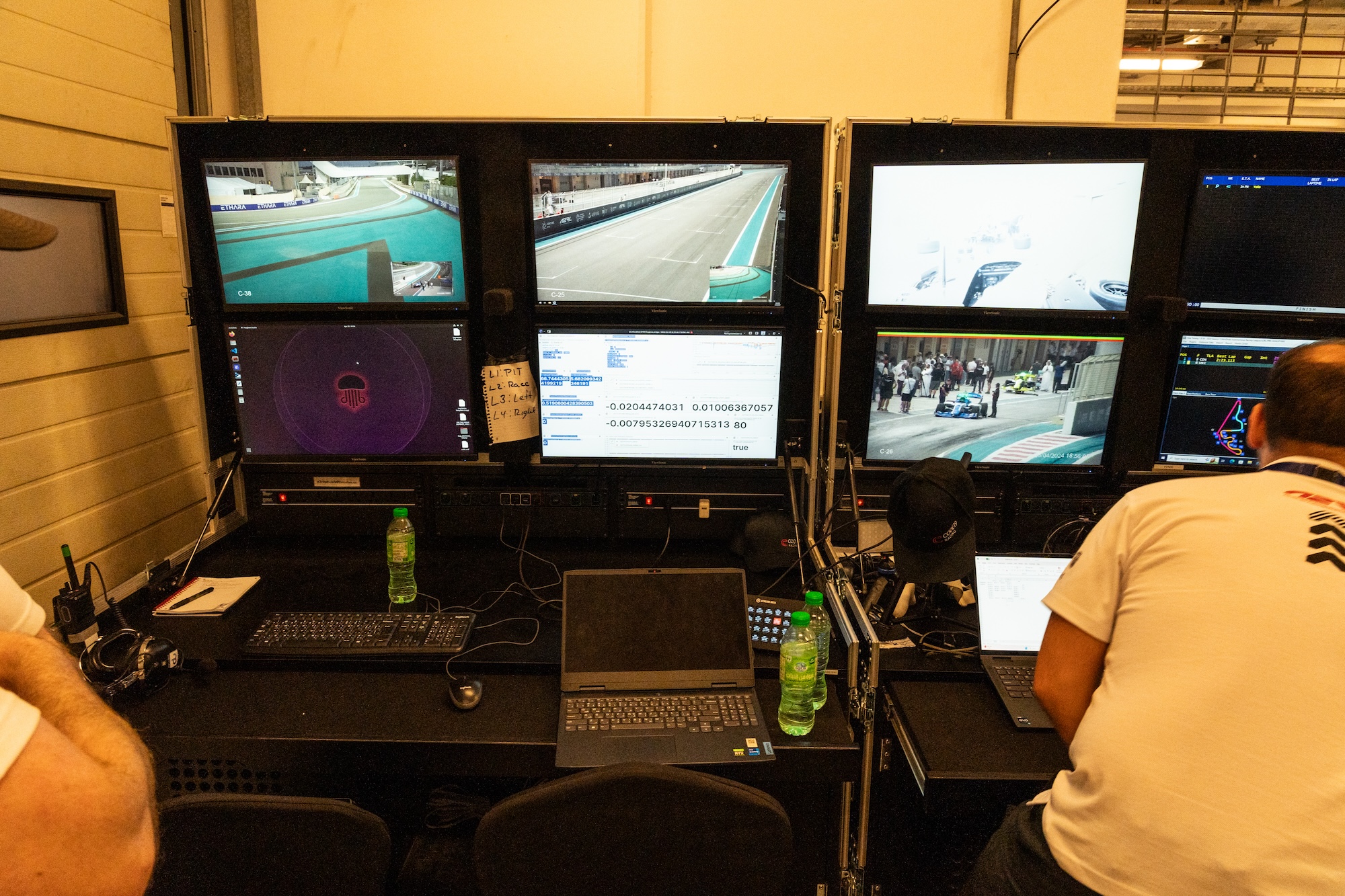Wander the pits at any skilled motorsports occasion, particularly one thing like System 1, and also you’ll see infinite laptop shows stuffed with telemetry. Trendy groups are awash in real-time digital suggestions from the vehicles. I’ve been in lots of of those pits over time and marveled on the streams of information, however by no means have I seen an occasion of the Microsoft Visible Studio software program growth suite operating there proper amid the chaos.
However then, I’ve by no means attended something just like the inaugural Abu Dhabi Autonomous Racing League occasion this previous weekend. The A2RL, as it’s identified, will not be the primary autonomous racing sequence: There’s the Roborace sequence, which noticed autonomous race vehicles setting quick lap instances whereas dodging digital obstacles; and the Indy Autonomous Problem, which most lately ran at Las Vegas Motor Speedway throughout CES 2024.
Whereas the Roborace targeted on single-car time trials and the Indy Autonomous sequence facilities on oval motion, A2RL got down to break new floor in a few areas.
A2RL put 4 vehicles on observe, competing concurrently for the primary time. And, maybe extra considerably, it pitted the top-performing autonomous automobile in opposition to a human being, former System 1 pilot Daniil Kvyat, who drove for varied groups between 2014 and 2020.
The true problem was behind the scenes, with groups staffed with an impressively numerous cadre of engineers, starting from fledgling coders to doctorate college students to full-time race engineers, all preventing to seek out the restrict in a really new method.
In contrast to System 1, the place 10 producers design, develop and produce utterly bespoke vehicles (typically with the assist of AI), the A2RL race vehicles are fully standardized to supply a degree taking part in discipline. The 550-horsepower machines, borrowed from the Japanese Tremendous System Championship, are equivalent, and the groups usually are not allowed to alter a single element.
That features the sensor array, which options seven cameras, 4 radar sensors, three lidar sensors and GPS in addition — all of that are used to understand the world round them. As I might be taught whereas wandering the pits and chatting to the varied groups, not all people is absolutely tapping into the 15 terabytes of information every automobile hoovers up each single lap.
Some groups, just like the Indianapolis-based Code 19, solely began work on the monumental undertaking of making a self-driving automobile a couple of months in the past. “There’s 4 rookie groups right here,” stated Code 19 co-founder Oliver Wells. “Everybody else has been competing in competitions similar to this, a few of them for as much as seven years.”
It’s all in regards to the code
Munich-based TUM and Milan-based Polimove have intensive expertise operating and successful in each Roborace and the Indy Autonomous Problem. That have carries over, as does the supply code.
“On the one hand, the code is repeatedly developed and improved anyway,” stated Simon Hoffmann, group principal at TUM. The group made changes to alter the cornering conduct to go well with the sharper turns within the highway course and likewise modify the overtaking aggression. “However usually, I might say we use the identical base software program,” he stated.
By way of the sequence of quite a few qualifying rounds all through the weekend, the groups with the best expertise dominated the timing charts. TUM and Polimove have been the one two groups to finish lap instances in lower than two minutes. Code 19’s quickest lap, nevertheless, was simply over three minutes; the opposite new groups have been far slower.
This has created a contest that’s not often seen in software program growth. Whereas there have definitely been earlier aggressive coding challenges, like TopCoder or Google Kick Begin, this can be a very totally different type of factor. Enhancements in code imply quicker lap instances — and fewer crashes.
Kenna Edwards is a Code 19 assistant race engineer and a scholar at Indiana College. She introduced some earlier app growth expertise to the desk, however needed to be taught C++ to put in writing the group’s antilock braking system. “It saved us a minimum of a few instances from crashing,” she stated.
In contrast to conventional coding issues which may require debuggers or different instruments to observe, improved algorithms right here have tangible outcomes. “A cool factor has been seeing the flat spots on the tire enhance over the following session. Both they’ve shrunk or in frequency,” Edwards stated.
This implementation of concept not solely makes for participating engineering challenges but additionally opens up viable profession paths. After earlier interning with Chip Ganassi Racing and Normal Motors, and due to her expertise with Code 19, Edwards begins full-time at GM Motorsports this summer season.
A watch towards the long run
That type of growth is a large a part of what A2RL is about. Shadowing the principle on-track motion is a secondary sequence of competitions for youthful college students and youth teams around the globe. Earlier than the principle A2RL occasion, these teams competed with autonomous 1:8-scale mannequin vehicles.
“The intention is, subsequent yr, we maintain for the faculties the smaller mannequin vehicles, we’ll maintain for the colleges perhaps doing it on go-karts, a bit greater, they will play with the autonomous go-karts. After which, if you wish to be within the huge league, you begin racing on these vehicles,” stated Faisal Al Bannai, the secretary basic of Abu Dhabi’s Superior Know-how Analysis Council, the ATRC. “I feel by them seeing that path, I feel you’ll encourage extra guys to return into analysis, to return into science.”
It’s Al Bannai’s ATRC that’s footing the invoice for the A2RL, overlaying the whole lot from the vehicles to the resorts for the quite a few groups, a few of whom have been testing in Abu Dhabi for months. In addition they placed on a world-class social gathering for the principle occasion, full with live shows, drone races, and a ridiculous fireworks present.
The on-track motion was rather less spectacular. The primary try at a four-car autonomous race was aborted after one automobile spun, blocking the next vehicles. The second race, nevertheless, was way more thrilling, that includes a cross for the lead when the College of Modena’s Unimore group automobile went vast. It was TUM that made the cross and received the race, taking residence the lion’s share of the $2.25 million prize purse.
As for man vs. machine, Daniil Kvyat made fast work of the autonomous automobile, passing it not as soon as however twice to very large cheers from the assembled crowd of greater than 10,000 spectators who took benefit of free tickets to return see a bit little bit of historical past — plus round 600,000 extra streaming the occasion.
The technical glitches have been unlucky. Nonetheless it was a exceptional occasion to witness and illustrated how far autonomy has come — and naturally, how far more progress must be made. The quickest automobile was nonetheless upwards of 10 seconds off of Kvyat’s time. Nonetheless, it ran clean, clear laps at a powerful velocity. That’s in stark distinction to the primary DARPA Grand Problem in 2004, which noticed each single competitor both crashing right into a barrier or meandering off into the desert on an unplanned sojourn.
For A2RL, the actual take a look at might be whether or not it may evolve right into a financially viable sequence. Promoting drives most motorsports, however right here, there’s the additional advantage of creating algorithms and applied sciences that producers might moderately apply of their vehicles.
ATRC’s Al Bannai informed me that whereas the sequence organizers personal the vehicles, the groups personal the code and are free to license it: “What they compete on in the meanwhile is the algorithm, the AI algorithm that makes this automobile do what it does. That belongs to every of the groups. It doesn’t belong to us.”
The true race, then, may not be on the observe, however in securing partnerships with producers. In any case, what higher option to encourage confidence in your autonomous know-how than by exhibiting it may deal with visitors on the race observe at 160 mph?






